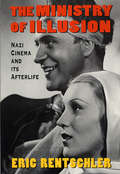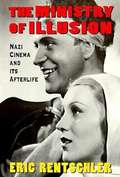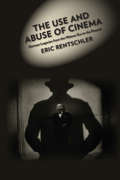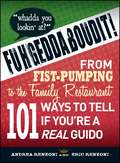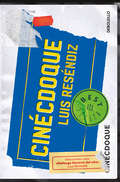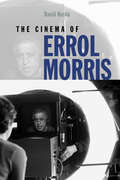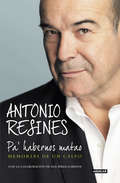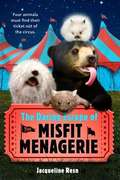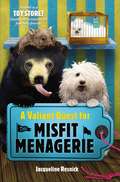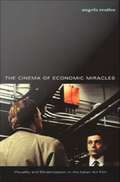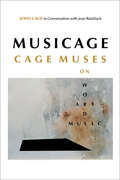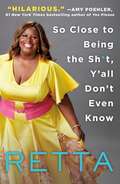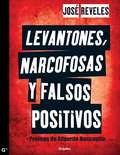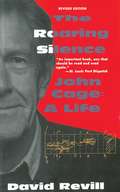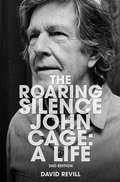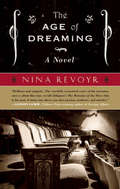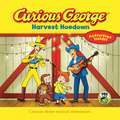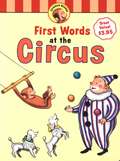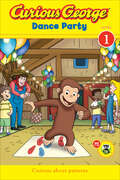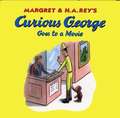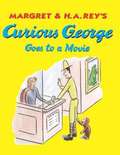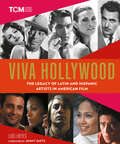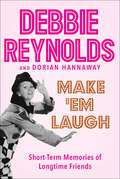- Table View
- List View
Ministry of Illusion: Nazi Cinema and Its Afterlife
by Eric RentschlerGerman cinema of the Third Reich, even a half-century after Hitler's demise, still provokes extreme reactions. "Never before and in no other country," observes director Wim Wenders, "have images and language been abused so unscrupulously as here, never before and nowhere else have they been debased so deeply as vehicles to transmit lies." More than a thousand German feature films that premiered during the reign of National Socialism survive as mementoes of what many regard as film history's darkest hour. As Eric Rentschler argues, however, cinema in the Third Reich emanated from a Ministry of Illusion and not from a Ministry of Fear. Party vehicles such as Hitler Youth Quex and anti-Semitic hate films such as Jew Süss may warrant the epithet "Nazi propaganda," but they amount to a mere fraction of the productions from this era. The vast majority of the epoch's films seemed to be "unpolitical"--melodramas, biopix, and frothy entertainments set in cozy urbane surroundings, places where one rarely sees a swastika or hears a "Sieg Heil." Minister of propaganda Joseph Goebbels, Rentschler shows, endeavored to maximize film's seductive potential, to cloak party priorities in alluring cinematic shapes. Hitler and Goebbels were master showmen enamored of their media images, the Third Reich was a grand production, the Second World War a continuing movie of the week. The Nazis were movie mad, and the Third Reich was movie made. Rentschler's analysis of the sophisticated media culture of this period demonstrates in an unprecedented way the potent and destructive powers of fascination and fantasy. Nazi feature films--both as entities that unreeled in moviehouses during the regime and as productions that continue to enjoy wide attention today--show that entertainment is often much more than innocent pleasure.
The Ministry of Illusion: Nazi Cinema and Its Afterlife
by Eric RentschlerEric Rentschler, America's leading scholar of National Socialist cinema, has produced a compact compendium of everything you wanted to know about Nazi filmdom but were afraid to ask. This extensively researched and well written book contains fascinating anecdotal information. It provides a delightful browsing in bits and pieces.
The Use and Abuse of Cinema: German Legacies from the Weimar Era to the Present (Film and Culture Series)
by Eric RentschlerEric Rentschler's new book, The Use and Abuse of Cinema, takes readers on a series of enthralling excursions through the fraught history of German cinema, from the Weimar and Nazi eras to the postwar and postwall epochs and into the new millennium. These journeys afford rich panoramas and nuanced close-ups from a nation's production of fantasies and spectacles, traversing the different ways in which the film medium has figured in Germany, both as a site of creative and critical enterprise and as a locus of destructive and regressive endeavor. Each of the chapters provides a stirring minidrama; the cast includes prominent critics such as Siegfried Kracauer and Rudolf Arnheim; postwar directors like Wolfgang Staudte, Rainer Werner Fassbinder, Wim Wenders, and Alexander Kluge; representatives of the so-called Berlin School; and exponents of mountain epics, early sound musicals, rubble films, and recent heritage features. A film history that is both original and unconventional, Rentschler's colorful tapestry weaves together figures, motifs, and stories in exciting, unexpected, and even novelistic ways.
Fuhgeddaboudit!: From Fist-Pumping to Family Restaurant - 101 Ways to Tell If You're a Guido
by Andrea Renzoni Eric RenzoniManicures, manicotti, and living in mom’s basement.Madonn! The lives of guidos and guidettes can be hard. Are your days spent on GTL and getting your hair to outrageous heights? Is the night not complete without a brawl with some stunad followed by a late-night sausage and peppers? Still not sure you’re a guido? This hilarious collection puts your doubts to rest with common guido antics and behavior, such as:You Get the Italian Flag Inked on Your Culo (Hint: You Can’t Show Your Mama)You’ve Created Your Own Nickname--and Tried to Copyright It You Spend a Half an Hour Perfecting Your Blow-Out and Another Half Hour Admiring It in the MirrorYou Describe Your Dream Guy as a JuiceheadYour "Nice Clothes" Are Animal PrintComplete with guido quizzes (What’s Your Guido Nickname?), fun facts, and trivia (Italian Slang 101), this book is the ultimate goobmah’s guide to Italian pride.
FUHGEDDABOUDIT!: From Fist-Pumping to the Family Restaurant
by Andrea Renzoni Eric RenzoniManicures, manicotti, and living in mom’s basement. Madonn! The lives of guidos and guidettes can be hard. Are your days spent on GTL and getting your hair to outrageous heights? Is the night not complete without a brawl with some stunad followed by a late-night sausage and peppers? Still not sure you’re a guido? This hilarious collection puts your doubts to rest with common guido antics and behavior, such as: You Get the Italian Flag Inked on Your Culo (Hint: You Can’t Show Your Mama) You’ve Created Your Own Nickname--and Tried to Copyright It You Spend a Half an Hour Perfecting Your Blow-Out and Another Half Hour Admiring It in the Mirror You Describe Your Dream Guy as a Juicehead Your "Nice Clothes" Are Animal Print Complete with guido quizzes (What’s Your Guido Nickname?), fun facts, and trivia (Italian Slang 101), this book is the ultimate goobmah’s guide to Italian pride.
Cinécdoque
by Luis ReséndizCinécdoque es el libro que los cinéfilos necesitaban para repensar el cine comercial, reflexionar sobre sus cambios y llevar más allá de la pantalla las conquistas del séptimo arte. Con prólogo de Fernanda Solórzano. «Los textos de Cinécdoque aportan una mirada profunda a películas y fenómenos que otros, desde la pereza, consideran ligeros. Más importante, su autor es un defensor acérrimo del ensayo bien meditado. Este libro da prueba de ello y, al hacerlo, también declara: la mejor crítica cinematográfica -la única que permanece- es la que se disfruta leer.» Fernanda Solórzano, en el prólogo «Un análisis detallado sobre el blockbuster, así como una amplia disección de los elementos frecuentemente desapercibidos en su contexto [...] Si la cultura pop nutre a sociedades enteras, ¿por qué negar que también forma parte de la experiencia del ser humano?» Joyce Kauffman, Ambulante «El libro que los cinéfilos necesitaban para repensar el cine comercial, reflexionar sobre sus cambios y llevar más allá de la pantalla algunas conquistas del séptimo arte.» Lothar Torres, Ibero 90.9
The Cinema of Errol Morris (Wesleyan Film)
by David ReshaThe Cinema of Errol Morris offers close analyses of the director's films--from box office successes like The Thin Blue Line and The Fog of War to Morris's early works like Vernon, Florida and controversial films like Standard Operating Procedure. Film scholar David Resha's reappraisal of Morris's films allows us to rethink the traditional distinction between stylistically conservative documentaries, which are closely invested in evidence and reality, and stylistically adventurous films, which artfully call to question such claims of nonfiction and truth. According to Resha, Errol Morris does not fit neatly in this division of the documentary tradition. Rather, his experiments with documentary conventions constitute another way to investigate reality--in particular, to examine the ways in which his subjects understand, and misunderstand, themselves and the world around them. Seen within the nonfiction tradition, an Errol Morris documentary is a flexible form of lively, engaging storytelling and shrewd, cutting, in-depth reportage.
Pa' habernos matao
by Antonio ResinesUn hermoso y entretenido recorrido por la vida de Antonio Resines, por sus películas y por la historia reciente de España. Antonio Resines, después de haber aprobado el Curso Preuniversitario que a finales de los setenta era conocido vulgarmente como «Preu», empezó en Madrid sus estudios universitarios, primero en Derecho y luego en Periodismo. Fue en esta época cuando, por casualidad, comenzó a actuar. Nada presagiaba entonces que llegaría a ser uno de los actores más reconocidos de su generación, a obtener distinciones tan importantes como el Goya al mejor actor y a convertirse en presidente de la Academia de las Artes y las Ciencias Cinematográficas de España. En Pa' habernos matao el famoso actor rememora su vida y sus películas, al tiempo que hace un ameno y entrañable recorrido por la historia reciente de nuestro país. Un libro lleno de anécdotas -algunas divertidas, otras cáusticas y otras muy reveladoras- por cuyas páginas desfilan un nutrido elenco de personajes -Fernando Trueba, José Luis Cuerda, Jorge Sanz, Fernando Colomo, entre otros- y momentos clave de las últimas décadas. Descubriremos también a un hombre bueno, con un gran sentido del humor y que disfruta de la compañía de sus amigos. La crítica ha dicho...«Una verdadera delicia, sin excepciones.»El correo Gallego «Pa' habernos matao es un libro precioso. Las memorias de un actor único, Antonio Resines.»El correo Gallego
The Daring Escape of the Misfit Menagerie
by Jacqueline ResnickFour animals must find their ticket out of the circus. Smalls the sun bear, Tilda the Angora rabbit, Rigby the Komondor dog, and Wombat the wombat are the four animals that make up "the misfit menagerie." Together they've always lived a happy life on Mr. Mumford's farm. That is, until one fateful evening when Mumford, loopy from elderberry wine, accidentally loses them to the dastardly circus owner Grande Master Claude. Suddenly, these animals are forced to perform death-defying tricks and live in filthy, cramped cages as members of Claude's traveling circus. But all hope is not lost! Claude's nephew Bertie and his friend Susan, a circus acrobat, are equally fed up with Claude's evil ways, and together they might just have what it takes to find their ticket out of the circus.
A Valiant Quest for the Misfit Menagerie
by Jacqueline ResnickTrapped in a toy store? Sounds like a mission for four furry friends. Bertie, Susan, and the Misfit Menagerie--Smalls the sun bear, Rigby the Komondor dog, and Wombat the wombat--have at long last escaped from evil Grand Master Claude's Most Magnificent Circus and are finally free to live life at their leisure. But there's something missing. Something that's keeping them from moving on. Or rather, someone. Tilda the Angora rabbit--and fourth member of the Misfit Menagerie--is being held captive at Toddle's Toy Emporium, a massive toy store more impressive than even F.A.O. Schwarz. Now Bertie, Smalls, and the gang--including a sword-wielding hedgehog--must embark on a quest to rescue their kidnapped friend, braving the mean streets of Hollyhoo City and the bratty Chrysantheum Toddle. It's a journey that will take them over an actual clay rainbow, force them to hide among stuffed animals in a life-like jungle, and lead them to soar above the ground in a hot-air balloon--all big tasks for animals who only recently saw that there was a world outside of Mr. Mumford's farm. But if they're valiant enough, they just might reunite the menagerie and find themselves a new home.
The Cinema of Economic Miracles: Visuality and Modernization in the Italian Art Film
by Angelo RestivoThe Italian art cinema of the 1960s is known worldwide for its brilliance and vitality. Yet rarely has this cinema been considered in relation to the profound economic and cultural changes that transformed Italy during the sixties--described as the "economic miracle. " Angelo Restivo argues for a completely new understanding of that cinema as a negotiation between a national aesthetic tradition of realism and a nascent postmodern image culture. Restivo studies numerous films of the period, focusing mainly on the works of Pier Paolo Pasolini and Michelangelo Antonioni. He finds that these auteurs' films reworked the neorealist aesthetic developed in the 1940s and 1950s, explored issues brought to the fore by the subsequent consumer boom, and presaged developments central to both critical theory and the visual arts in the 1980s and 1990s. Drawing on the theories of Lacan, Zizek, Benjamin, Foucault, Jameson, and Deleuze, he shines new light on such films as Pasolini's Accattone and Teorema, and Antonioni's Red Desert and Blow-Up. Restivo's model for understanding the relationship of the 1960s Italian art film to its cultural contexts also has implications that extend to the developing national cinemas of countries such as Brazil and Taiwan. The Cinema of Economic Miracles will interest scholars and students in all areas of film studies, especially those studying theories of the image, national cinema theory, and Italian cinema, and to those engaged in poststructuralist theory, philosophy, and comparative literature.
Musicage: Cage Muses on Words, Art, Music
by Joan Retallack John Cage"I was obliged to find a radical way to work -- to get at the real, at the root of the matter," John Cage says in this trio of dialogues, completed just days before his death. His quest for the root of the matter led him beyond the bounds of the conventional in all his musical, written, and visual pieces. The resulting expansion of the definition of art -- with its concomitant emphasis on innovation and invention -- earned him a reputation as one of America's most influential contemporary artists. Joan Retallack's conversations with Cage represent the first consideration of his artistic production in its entirety, across genres. Informed by the perspective of age, Cage's comments range freely from his theories of chance and indeterminate composition to his long-time collaboration with Merce Cunningham to the aesthetics of his multimedia works. A composer for whom the whole world -- with its brimming silences and anarchic harmonies -- was a source of music, Cage once claimed, "There is no noise, only sounds." As these interviews attest, that penchant for testing traditions reached far beyond his music. His lifelong project, Retallack writes in her comprehensive introduction, was "dislodging cultural authoritarianism and gridlock by inviting surprising conjunctions within carefully delimited frameworks and processes." Consummate performer to the end, Cage delivers here just such a conjunction -- a tour de force that provides new insights into the man and a clearer view of the status of art in the 20th century.
So Close to Being the Sh*t, Y'all Don't Even Know
by RettaIn her hilarious book of essays, Parks and Recreation star Retta shares the stories that led to her success in Hollywood.In So Close to Being the Sh*t, Y’all Don’t Even Know, Parks and Recreation star Retta takes us on her not-so-meteoric rise from roaches to riches (well, rich enough that she can buy $15,000 designer handbags yet scared enough to know she’s always a heartbeat away from ramen with American cheese). Throwing her hard-working Liberian parents for a loop, Retta abandons her plan to attend med school after graduating Duke University to move to Hollywood to star in her own sitcom—like her comedy heroes Lucille Ball and Roseanne. Say what? Word. Turns out Retta might actually be on to something. After winning Comedy Central’s stand-up competition, she should be ready for prime time—but a fear of success derails her biggest dream. Whether reminiscing about her days as a contract chemist at GlaxoSmithKline, telling “dirty” jokes to Mormons, feeling like the odd man out on Parks, fending off racist trolls on Twitter, flirting with Michael Fassbender, or expertly stalking the cast of "Hamilton," Retta’s unique voice and refreshing honesty will make you laugh, cry, and laugh so hard you’ll cry. Her eponymous sitcom might not have happened yet, but by the end of So Close to Being the Sh*t, you’ll be rooting for Retta to be the next one-named wonder to take over your television. And she just might inspire you to reach for the stars, too.
Levantones, narcofosas y falsos positivos
by José RevelesEn México la corrupción política al más alto nivel es el principal motor de la violencia encarnizada y de las violaciones masivas de los derechos humanos, fenómenos que José Reveles presenta en este libro con el más fino detalle. EDGARDO BUSCAGLIA Los saldos de la guerra contra el crimen organizado en México ya han alcanzado la categoría de tragedia: el país se ha convertido en una tumba colectiva de sus propios ciudadanos. Frente a este desolador panorama, en el presente libro se buscan explicaciones: por qué tanta muerte, tantos entierros clandestinos, tantos desaparecidos. Por medio de testimonios de primera mano y análisis de expertos, José Reveles poneen evidencia no sólo que el Estado mexicano ha sido rebasado por las corporaciones delictivas, también que cada día la población civil es más vulnerable a la violencia desmedida. Abundan las víctimas inocentes: los asesinados en retenes militares, en bares, en centros de rehabilitacióno en fiestas familiares; los levantados y los falsos positivos (culpables fabricados). A partir de datos apabullantes sobre la realidad criminal, esta investigación periodística advierte sobre la aparición de escuadrones de exterminio y limpieza social, describe abusos de soldados y marinos, nombra a los perpetradores y confirma el establecimiento de una política que arrastra a la muerte a muchos "prescindibles", "desechables" y personas comunes que "pasaban por ahí". Después de terribles hechos como la masacre de 72 indocumentados en San Fernando, Tamaulipas, ocurrida en 2010, impactó el hallazgo de cuantiosos cadáveres en las llamadas narcofosas; peor aún, en estas páginas se demuestra que hay varios cientos más diseminados a lo largo del territorio nacional. José Reveles, autor de El cártel incómodo, asegura que el verdadero infierno apenas se vislumbra.
The Roaring Silence: A Life
by David RevillComposer John Cage is often described as the most influential musician of the last half-century. He has defined - and continues to define - our whole concept of "avant-garde", not just in music but increasingly as writer and visual artist. "The Roaring Silence" is the first full-length biography of Cage. It documents his life in unrivalled detail, interweaving a close account of the evolution of his work with an exploration of his aesthetic, political and philosophical ideas. David Revil maintains that Cage's extraordinary productivity and versatility are best understood in the light of his inner development. His life, work and ideas have clarified, refined and reinforced one another, and thereby Cage has made himself what he is. While never assuming specialist knowledge, this book discusses all of Cage's works in depth and sets them in the context of his compositional, theoretical and personal development. Also included are the most comprehensive worklist, discography and bibliography available to date, as well as many previously unpublished photographs. The author draws judiciously on extensive library and archive material, and on exclusive interviews and conversations with Cage and many of his friends and associates. The result is a true-to-life and true-to-form appreciation of a genuine original, of interest not only to the serious researcher and the musician but to everyone interested in the cultural influences that have shaped, and are shaping 20th century thought.
The Roaring Silence: John Cage: A Life
by David RevillJohn Cage has been described as the most important composer of our time. He combined classical European training with Eastern spirituality to produce an American amalgam of such vitality and originality that it continues to define what we mean by avant-garde. His influence has touched generations of artists, including Philip Glass, David Byrne, and his longtime collaborator Merce Cunningham. His work and ideas have influenced not only the world of music but also dance, painting, printmaking, video art, and poetry.The Roaring Silence documents his life in unrivaled detail, interweaving a close account of the evolution of his work with an exploration of his aesthetic and philosophical ideas, while placing these in the greater perspective of American life and letters. Paying due attention to Cage's inventions, such as the prepared piano, and his pioneering use of indeterminate notation and chance operations in composition (utilizing the I Ching), David Revill also illuminates Cage the performer, printmaker, watercolorist, expert amateur mycologist, game show celebrity, political anarchist, and social activist.Arnold Schoenberg once called Cage "not a composer, but an inventor--of genius." This revised edition presents never-before-seen correspondence between Cage and other luminaries of his day, as well as new analysis into his legacy. The Roaring Silence celebrates the life and work of this true American original.
The Age of Dreaming: A Novel
by Nina Revoyr"The Age of Dreaming is a masterpiece of the sort that doesn't just seduce the reader-it leaves you transformed. Nina Revoyr deserves to be counted among the top ranks of novelists at work today."-Jerry Stahl, author of I, Fatty"This is a riveting, wise, and gorgeous novel."-Mary Yukari Waters"Brilliant and original. . . . The carefully restrained voice of its narrator recalls Ishiguro's The Remains of the Day."-Alison Lurie, Pulitzer Prize winnerJun Nakayama was a silent film star in the early days of Hollywood, but by 1964, he is living in complete obscurity-until a young writer, Nick Bellinger, reveals that he has written a screenplay with Nakayama in mind. Jun is intrigued by the possibility of returning to movies, but he begins to worry that someone might delve too deeply into the past and uncover the events that led to the abrupt end of his career in 1922. These events include the changing racial tides in California and the unsolved murder of his favorite director, Ashley Bennett Tyler.The Age of Dreaming is part historical novel, part mystery, and part unrequited love story.Nina Revoyr was born in Tokyo to a Japanese mother and a Polish-American father, and grew up in Japan, Wisconsin, and Los Angeles. She is the author of two previous novels, The Necessary Hunger and Southland, which was a Book Sense 76 pick, winner of the Ferro-Grumley and Lambda Literary awards, a finalist for an Edgar Award, and one of the Los Angeles Times' "Best Books of 2003." She lives and works in Los Angeles.
Curious George Harvest Hoedown (Curious George)
by H. A. ReyIn this new book based on the Emmy Award-winning PBS show, Curious George, the man with the yellow hat can’t wait to join the Uptown Bluegrass Band for a good old-fashioned country hoedown. When George accidentally ruins the man’s guitar while trying to clean it, George and Allie decide to make a new guitar! With a shoestring, rubber band, fishing wire, and yoyo, George and Allie's creation has a truly unique sound! Bonus activities help reinforce the concepts in the story, including instructions for building your very own homemade string instrument!
Curious George's First Words at the Circus
by H. A. ReyEach of these well-priced ebooks introduces readers to a new, fun location and identifies objects they might find there. These ebooks will build children's vocabulary as they follow Curious George on his trips to the zoo, circus, circus, aquarium, and farm. Bold colors, large type, and everyone's favorite mischievous monkey combine to make learning fun.
Curious George Dance Party (Curious George Ser.)
by H. A. Rey H. A. ReyGeorge is thrilled when he gets an invitation to Allie’s dance party: “He danced while he brushed his teeth. Sometimes he even danced while he slept.” His friend Bill, however, is worried he’ll be the only one who can’t dance. The two of them quickly learn the box step with the help of a color-coded map—and it’s a hit! This colorful early reader—based on the Emmy Awardwinning Curious George PBS TV show—includes a simple pattern activity and instructions on how to make a dance map. For more monkey fun, investigate www.curiousgeorge.com and discover all the latest on Curious George books, promotions, games, activities, and more!
Curious George Goes to the Movies
by H. A. Rey Margret ReyWhen his curiosity leads him to investigate how the movie gets onto the screen.Young readers will enjoy this picture book. Includes picture descriptions.
Curious George Goes to a Movie
by Margret ReyWhen his curiosity leads him to investigate how the movie gets onto the screen, George, an inquisitive monkey, disrupts the show. Share Curious George's irresistible qualities-ingenuity, opportunity, determination, and curiosity in learning and exploring-with these easy-to-read picture books for your young readers.
Viva Hollywood: The Legacy of Latin and Hispanic Artists in American Film (Turner Classic Movies)
by Luis I. ReyesThrough an authoritative narrative and lavish photography, this is an in-depth history of the stars, films, achievements, and influence of the Hispanic and Latino community in Hollywood history from the silent era to the present day.Overcoming obstacles of prejudice, ignorance, and stereotyping, this group has given the world some of its most beloved stars and told some of its most indelible stories. Viva Hollywood examines the stars in front of the screen as well as the people behind-the-scenes who have created a rich legacy across more than 100 years.The role of Latin women on screen is explored through the professional lives of Dolores Del Rio, Rita Hayworth, Raquel Welch, Salma Hayek, Penélope Cruz, and many more. The book covers the films and careers of actors ranging from silent screen idol Antonio Moreno, to international Oscar-winning star Anthony Quinn, to Andy Garcia and Antonio Banderas. A spotlight is also given to craftspeople who elevated the medium with their artistry—visionaries like cinematographer John Alonzo, Citizen Kane scenic artist Mario Larrinaga, and Oscar-winning makeup artist Beatrice de Alba.The stories of these and many others begins through a lens of stereotyped on-screen personas of Latin Lovers, sexy spitfires, banditos, and gangsters. World War II saw an embrace of Latin culture as the &“Good Neighbor Policy&” made it both fashionable and patriotic to feature stories set south of the border. Social problem films of the 1950s and '60s brought fresh looks at the community, with performances like Katy Jurado in High Noon, the cast of West Side Story, and racial inequality depicted in George Stevens's Giant. Civil Rights, the Chicano Movement, and the work of activist actors such as Ricardo Montalban and Edward James Olmos influenced further change in Hollywood in subsequent decades and paved the way for modern times and stars the likes of Jennifer Lopez and Lin-Manuel Miranda.Illustrated by more than 200 full-color and black-and-white images, Viva Hollywood is both a sweeping history and a celebration of the legacy of some of the greatest art and artists ever captured on screen.
American Cocktail
by Anita Reynolds Howard M. Miller George HutchinsonThis is the rollicking, never-before-published memoir of a fascinating woman with an uncanny knack for being in the right place in the most interesting times. Of racially mixed heritage, Anita Reynolds was proudly African American but often passed for Indian, Mexican, or Creole. Actress, dancer, model, literary critic, psychologist, but above all free-spirited provocateur, she was, as her Parisian friends nicknamed her, an "American cocktail. " One of the first black stars of the silent era, she appeared in Hollywood movies with Rudolph Valentino, attended Charlie Chaplin's anarchist meetings, and studied dance with Ruth St. Denis. She moved to New York in the 1920s and made a splash with both Harlem Renaissance elites and Greenwich Village bohemians. An emigre in Paris, she fell in with the Left Bank avant garde, " befriending Antonin Artaud, Man Ray, and Pablo Picasso. Next, she took up residence as a journalist in Barcelona during the Spanish Civil War and witnessed firsthand the growing menace of fascism. In 1940, as the Nazi panzers closed in on Paris, Reynolds spent the final days before the French capitulation as a Red Cross nurse, afterward making a mad dash for Lisbon to escape on the last ship departing Europe. In prose that perfectly captures the globetrotting nonchalance of its author, American Cocktail" presents a stimulating, unforgettable self-portrait of a truly extraordinary woman.
Make 'Em Laugh: Short-Term Memories of Longtime Friends
by Debbie Reynolds Dorian HannawayThe beloved Hollywood star and New York Times bestselling author of Unsinkable continues her intimate chat with fans in this entertaining collection of anecdotes, stories, jokes, and random musings from a woman who has seen it all—and done most of it.From her acclaimed performances to her headline-making divorce from Eddie Fisher, raising a famous daughter to hitting the road with a successful one-woman show, Debbie Reynolds was in the spotlight for decades. Over her more than six-decade-long career she met presidents, performed for the Queen of England, and partied with kings.In this fabulous personal tour, she recalls wonderful moments with the greats of the entertainment world—Lucille Ball, Frank Sinatra, Bette Davis, Phyllis Diller, and many, many more—sharing stories that shed new light on her life and career and the glittering world of Hollywood then and now. Debbie has plenty to tell—and in Make ’Em Laugh, she dishes it in the warm, down-to-earth voice her fans adore.Debbie shares memories of late night pals and some of the greatest comedians of all time, stories from the big screen and small, and tales of marriage, motherhood, and children. Combining her wicked sense of humor and appealing charm, she reveals the personal side of show business and fame in funny, poignant, and delightful reminiscences. Nothing is off limits: Debbie talks about her sex life, her family drama—and even shares a few secret recipes.A true Hollywood icon, beloved by millions of fans around the world, Debbie Reynolds died on December 28, 2016, at the age of 84, just one day after the death of her daughter, actress and author Carrie Fisher.
